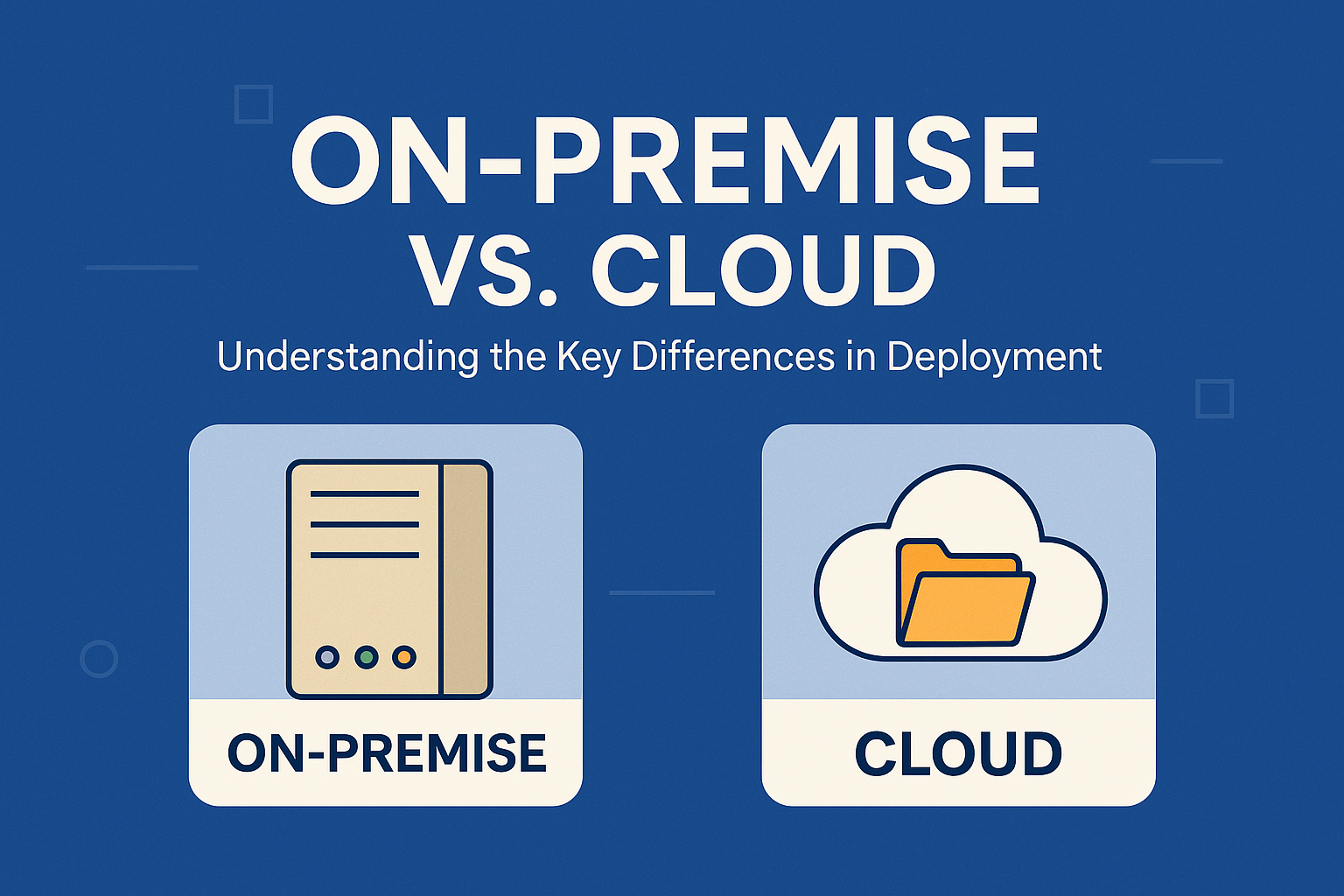
On-Premise vs Cloud: Understanding the Key Differences in Deployment
When businesses evaluate how to deploy their software solutions, they often face a critical decision: on-premise vs cloud deployment. Both options offer distinct advantages and drawbacks, and understanding the key differences is essential for making the right choice for your organisation.
At Heed, we are committed to helping businesses improve internal communications, and whether you choose to deploy on-premise or via the cloud, we offer flexible solutions to suit your needs. In this blog post, we’ll break down the key differences between on-premise and cloud deployments, exploring the positives and negatives of each approach.
On-Premise Deployment: Full Control and Customisation
What is On-Premise Deployment?
On-premise deployment refers to the traditional method of hosting software on a company’s own servers and infrastructure. This means that your IT team is responsible for managing everything from hardware maintenance to software updates and security protocols.
Positives of On-Premise Deployment:
- Full Control Over Infrastructure:
With on-premise deployment, your organization has complete control over the hardware, software, and security measures. This is especially important for businesses with stringent compliance requirements or those that need to tailor the software to their specific needs. - Enhanced Security:
Many businesses feel more secure when they have full control over their data. With on-premise software, you can implement security protocols that meet your specific standards and ensure that sensitive data remains in-house. - Customisation:
On-premise deployments are typically more customizable. Your IT team can tweak the software and systems to align with unique organizational workflows, enabling highly tailored solutions.
Negatives of On-Premise Deployment:
- Higher Upfront Costs:
The initial setup for on-premise deployments can be costly. You need to purchase the necessary hardware, software licenses, and pay for IT resources to maintain the system. This can be a significant financial burden, especially for smaller businesses. - Ongoing Maintenance and IT Resources:
Unlike cloud solutions, on-premise deployments require a dedicated IT team to manage the infrastructure, perform regular updates, and handle troubleshooting. This can lead to additional ongoing costs, time, and effort for your IT department. - Scalability Challenges:
Scaling an on-premise solution can be challenging and expensive. As your business grows, your infrastructure may need to be upgraded or expanded, which often involves significant investment in hardware and resources.
At a Glance
Table of Contents

Cloud Deployment: Flexibility and Efficiency with AWS
What is Cloud Deployment?
Cloud deployment refers to hosting software on remote servers provided by a third-party cloud service provider (such as AWS, Google Cloud, or Microsoft Azure). The cloud solution is accessed via the internet, and the cloud provider manages infrastructure, security, and maintenance.
At Heed, our cloud solution is deployed on AWS, providing a highly scalable, secure, and reliable infrastructure to power our internal communications platform. This allows us to ensure seamless performance and security, enabling businesses to focus on what they do best while we handle the technical details.
Positives of Cloud Deployment:
- Lower Initial Costs:
Cloud deployments often have lower upfront costs since there is no need to invest in physical hardware. Instead, businesses typically pay a subscription fee based on usage, which makes it easier to manage operating expenses and scale as needed. - Scalability and Flexibility:
One of the most significant advantages of cloud deployments is scalability. Cloud providers offer flexible solutions that allow businesses to scale up or down based on usage without the need for major infrastructure changes. This is ideal for companies with fluctuating demands or rapid growth. - Automatic Updates and Maintenance:
Cloud providers manage updates, patches, and security protocols, ensuring that your system stays up-to-date without the need for manual intervention. This reduces the burden on your IT team and ensures that you benefit from the latest features and security enhancements. - Remote Access and Collaboration:
Cloud solutions enable employees to access systems from anywhere with an internet connection, fostering collaboration across locations. This flexibility is especially beneficial for remote or hybrid workforces. - Reliability with AWS:
AWS is a leader in cloud computing and provides an infrastructure known for its reliability, security, and performance. With our cloud deployment on AWS, we can ensure high uptime and redundancy, providing a robust solution for your internal communication needs.
Negatives of Cloud Deployment:
- Data Security Concerns:
While cloud providers invest heavily in security, some organizations may be wary about hosting sensitive data on third-party servers. Data breaches and compliance issues can arise, especially if the provider’s security measures fall short of your organization’s standards. - Ongoing Subscription Costs:
While cloud deployments have lower upfront costs, businesses must consider ongoing subscription fees. Over time, these fees can add up, and the total cost may exceed the cost of an on-premise solution, especially for large organizations. - Reliance on Internet Connectivity:
Cloud solutions require a reliable internet connection. Any disruption to your internet service can lead to downtime or decreased performance. This could be a concern for businesses in areas with less stable internet infrastructure.
Which Deployment Option is Right for Your Business?
The choice between on-premise vs cloud deployments depends on various factors, including your organization’s size, industry, budget, and security requirements. Here are some questions to ask when evaluating which option is right for you:
- What is your budget? If initial costs are a concern, cloud deployment may be the better option. It offers lower upfront costs and a pay-as-you-go model.
- How important is data security to your organisation? If maintaining tight control over your data is critical, on-premise solutions may offer more peace of mind.
- How fast is your organisation growing? If your business is scaling quickly, cloud deployment provides the flexibility and scalability to grow without needing major infrastructure investments.
- Do you have the resources for IT management? On-premise solutions require ongoing IT management, whereas cloud services handle most maintenance for you.
Conclusion: Does On-Premise or Cloud get our Vote?
Ultimately, both on-premise and cloud deployments offer unique advantages and potential drawbacks. On-premise solutions provide greater control, customization, and security, but come with higher initial costs and maintenance requirements. Cloud deployments offer flexibility, scalability, and lower upfront costs, but businesses must consider the ongoing subscription fees and potential data security concerns.
At Heed, we understand that every business has unique communication needs. Our platform, deployed on AWS, is designed to integrate seamlessly with your existing tools and infrastructure, whether you choose an on-premise or cloud deployment. If you’re unsure which option is best for your organisation, our team is here to help you evaluate your options and find the right solution.

.svg)



.svg)
.svg)